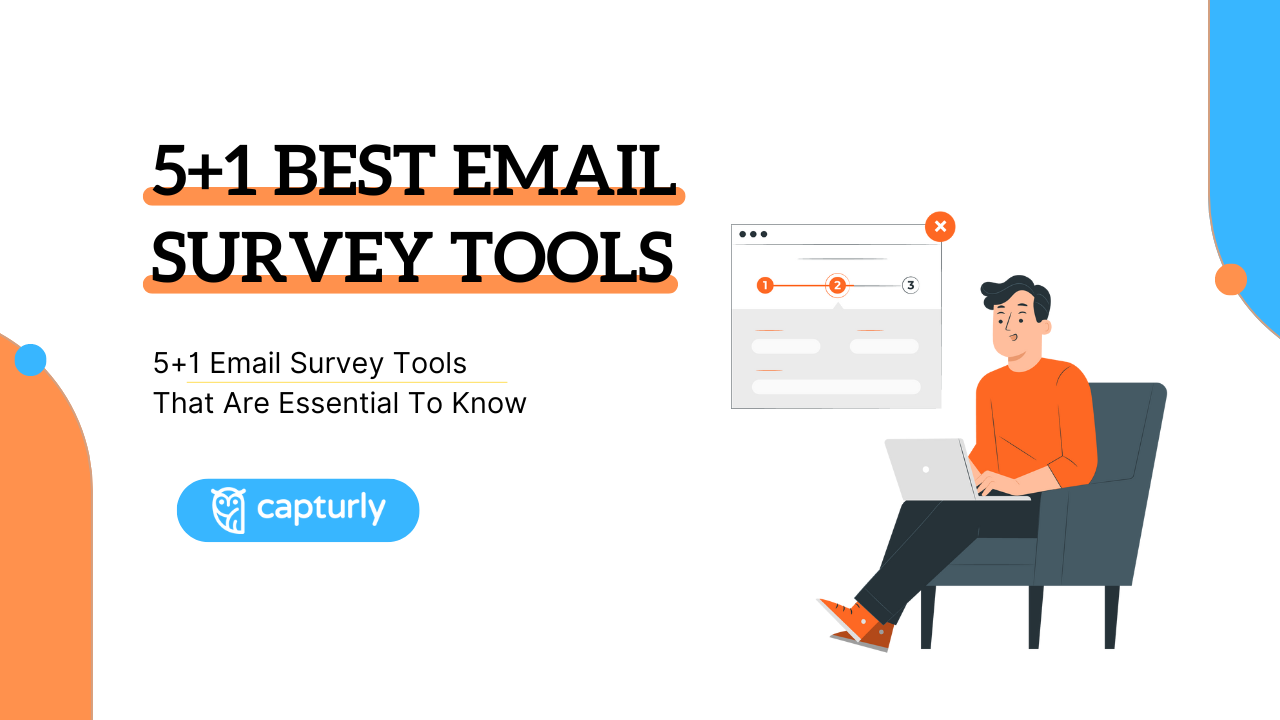In the modern world of digital marketing, it’s very tricky to find new customers and convince them for a potential buy. According to Invesp’s research, acquiring a new customer is five times more expensive than acquiring an existing one.
Of course, in certain times you can’t only rely on existing customers. It depends on your business progress, your current strategy, or the actual product that you sell (selling high-end cars, may lead to less customer retention rates, for obvious reasons).
Although, we can still say that most businesses need to convince existing customers for new and new purchases in order to avoid striving to their death. And it’s not just about the increased number of purchases that comes after them: convincing existing customers has some other advantages!
- Existing customers spend more than first-time customers
- The likelihood of selling to an existing customer is significantly bigger than selling to a first-time customer
- After three purchases on average, a company can maintain brand loyalty to one of its customers
These numbers are way too significant to neglect them at any cost. It would help if you stimulated them to buy from your website over and over again. But, what is your best way to do that? One contender is the email survey tool.
In this article, we will introduce to you this well-known tool, understand its strength, and recommend to you 6 of the best tools available on the internet in 2024!
Table of Contents
What is an email survey?
First, we need to define the meaning of an email survey.
Email survey is a quantitative data collection method sent through emails for a group of existing buyers, or customers that the sender company has data of. This method allows companies to gather feedback, preferences, or opinions from their customer base in a structured and measurable format.
Types of email surveys
There are numerous types of email surveys, in this phase, we will meet with 5 of them!
1. Customer Satisfaction Surveys
This form is used by companies to get answers to these questions:
- How satisfied are my existing customers with my product/service?
- How satisfied are my existing customers with the brand itself?
- How satisfied are my existing customers with the customer service?
This usually has two elements: the customer who gets this survey can click on a 1 to 5 scale, and then based on the given number, the customer can also explain the decision in a text format. So a customer satisfaction survey not only ensures quantitative data for the company, but carry some qualitative data as well.
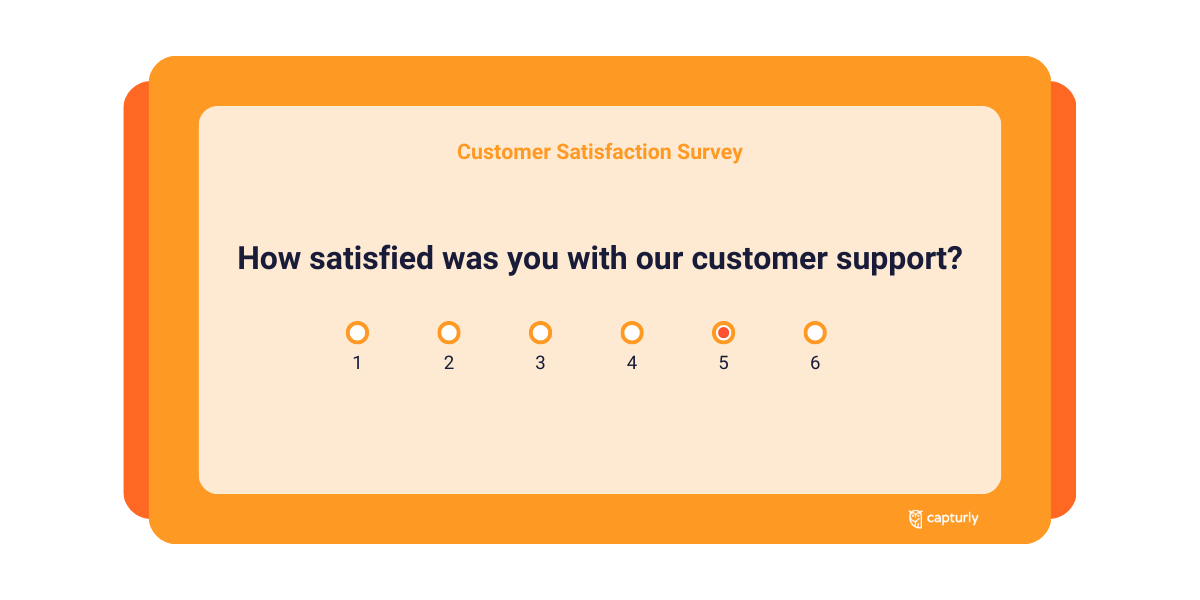
2. Net Promoter Score Survey (NPS)
This survey is good for discovering how many percent of your existing customers (or those who purchased from your brand not so long ago) recommend you to their friends, colleagues, relatives, to whole communities, and unknown groups of people!
These usually contain a 1-10 scale, where 9-10 means the customer is satisfied with the designated element, and will promote you later on. A 7-8 give point means that the customer is satisfied but less enthusiastic, and 0 to 6 means that the customer is unhappy, and will have a negative word of mouth about your brand. That’s actually the Net Promoter Score!
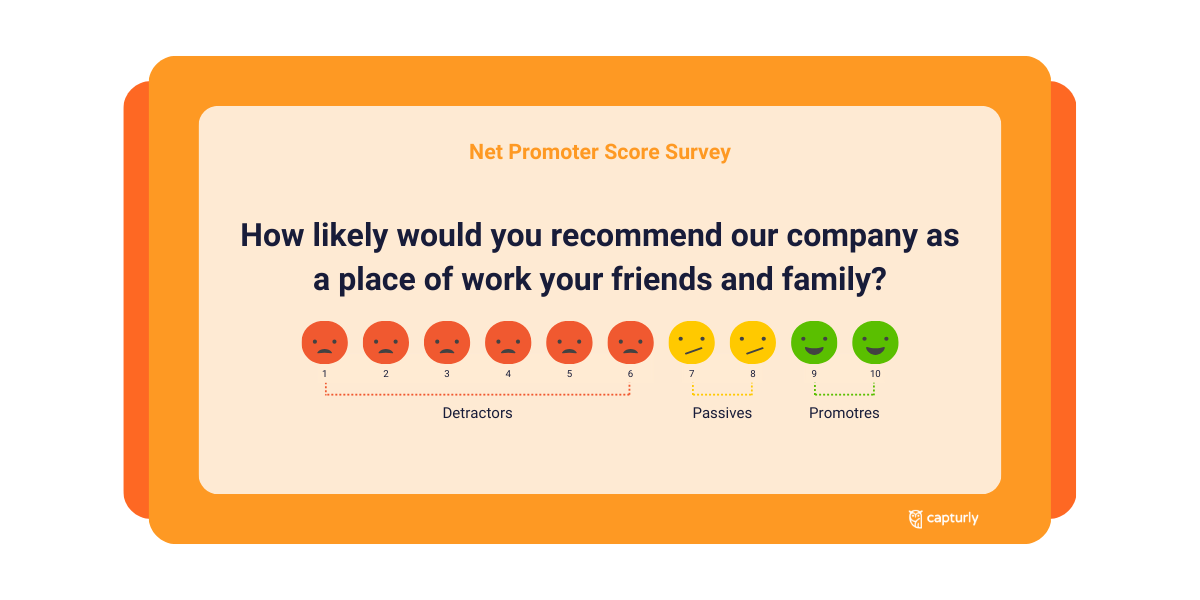
3. Customer Effort Score
A customer effort score shows your customers feelings about your customer service. It operates with one single question: how easy was it to resolve your issues? Then the customer can choose from a 1 to 7 scale.
The less their given number is, the longer they struggled with their issues on your site. Visitors don’t want to spend more time on a site, just for working out different approaches to solve issues. It will lead you to a bad user experience, so if you experience a low customer effort score, you need to act as soon as possible!
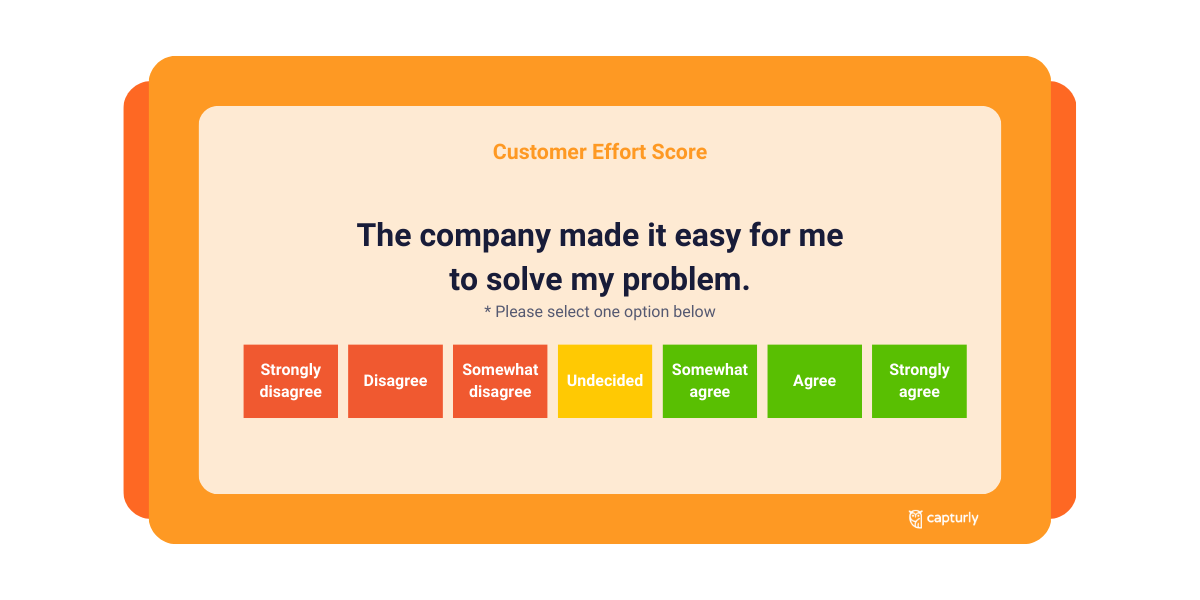
4. Product Feedback Survey
When a company delivers a product feedback survey to their existing customers, they are curious about their satisfaction with the available product.
A product feedback survey usually contains two email surveys, both in different time frames. One is when the product is not in the market yet, but the company is curious about what the existing customers think of the product concept. Also, if they have some new ideas, the company can still add them to the product.
And one, after they release the product, ask the customers whether it has exceeded their expectations, or not. Here, they can share their opinions, and comments so the company can discover hidden problems, and fix those issues at the next available time.
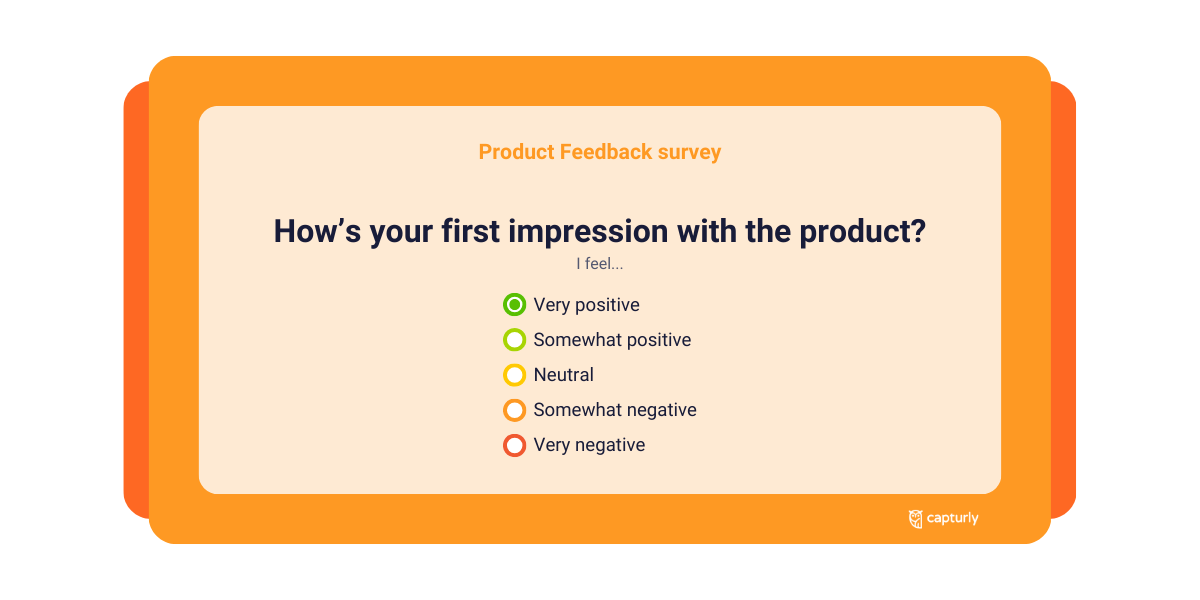
5. Employee Engagement Survey
This survey is a little bit different than the previous ones, as it rather discovers the employees’ opinions of the company.
Here, employees can share their thoughts, comments, and honest opinions about the company itself. If a business wants to hold its best colleagues inside the company for so long, it is unavoidable to tailor the work atmosphere to their needs.
It can be both anonymous, or named, qualitative, or quantitative, but one thing is sure: you need to be empathic with them, and rather than blaming them, search for solutions, and try to enhance their engagement, and commitment with the company.
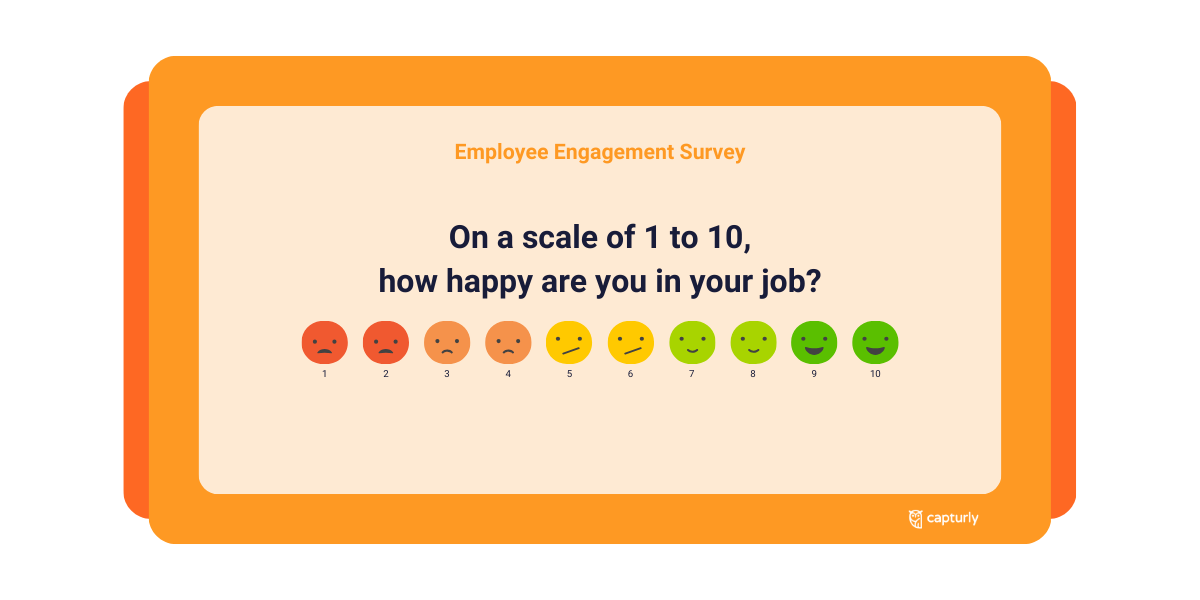
What is an email survey good for?
People tend to ask about the potential need of email surveys. “Why don’t you rather make in-site surveys? It would reach more users, and you can conclude from more data!” – Some of them say.
This opinion displays when we look at what some top notch website analytics tools offer: Lucky Orange, Mouseflow, and Crazyegg also have on-site survey tools, but none of them have email survey functions.
Well, the situation is you can reach different people with on-site surveys, and with email surveys.
With on-site surveys you can only reach those visitors who are currently browsing your website, also they can be both first-time buyers and existing customers. Of course, this type of survey also has some advantages: you can connect surveys with different website activities, and only that group of visitors get the actual survey, who made the trigger action before.
In this case, you can also more easily create analytics from the given data, as your website analytics program can certainly track website activity, but it’s way harder to track user clicks, scrolls, or record individual sessions in terms of an external source – which is an email, in this case – .
Advantages of surveying
On the other hand, email surveys have other advantages, just like:
- With email surveys, you can reach a broader audience, not just those who are currently active
- You can convince those buyers who didn’t frequently visit your site in the past
- Thus, a potential purchase may lead you to better profits (it costs more to convince a new buyer than an existing one)
- You can get answers to crucial questions, like why they stopped using your site, or what led them to this choice
- Out of other external platforms, emails have one of the best open, and response rates, according to research.
- With email surveys, you can make in-depth targeting, which is unimaginable in terms of website surveys. If you have data from your previous customers, you may know their main language, previously used service, or bought product, used web browser, or device type. But actually, the amount of possible characteristics can be almost infinite; it all depends on the actual industry that your company is in, and the amount of data you want to record from each visit.
The crucial thing is: you know this data, because they once bought something from you, and your CRM software stores some of their data. Email surveys can be tailored based on your previously gathered information, but on-site surveys never have this advantage.
Best 5+1 available email survey tools
In this part of the article, we will demonstrate to you 5+1 great email survey options available on the internet. With these options, you can’t just only convince your existing customers for possible repurchases, but you can ask their opinions about various topics, and with the help of this you can get the maximum out of your website!

1. Capturly
Capturly’s survey tool is the first recommended pick for you to try. Capturly Analytics, a data analytics company established in 2016, sold heatmap analytics, and session recording services. However, as the company got bigger and bigger, Capturly started to look for features, and they finally introduced the email survey function in 2023.
Most prominent features
- Capturly’s biggest strength is the connection between their functions. None of the other email survey services have a session recording feature, and Capturly takes advantage of that opportunity. You can watch each individual’s single session who started to fill out the given survey and analyze where they clicked on, where they scrolled down, or what goals they completed.
- With Capturly’s tool, you can create a net promoter score type survey, also the tool makes charts from the given data, differentiating dissatisfied, neutral, and satisfied visitors with different colors.
- Automatic triggering function with satisfaction surveys – Capturly’s tool enables you to program a predefined trigger (an automatic satisfaction survey) that gets active after the visitor accomplishes an activity (clicks, completed goals, ended shopping procedure). This is great when you want to ask your visitors about how they felt about your site, but you don’t want to waste your time manually delivering these surveys.

Price
Capturly’s email survey is still in the beta phase, so we test its success day by day and edit with extra functions from time to time. That’s why Capturly’s email survey is available with Capturly’s free plan, which contains all of the currently available functions.
However, if you want to take advantage of the combination of email surveys, and the session replay function, and you have a high-traffic site, you may need to switch to one of Capturly’s paid plans.
That’s because in the free plan, Capturly can only record 1000 sessions/month, the remaining will not be recorded inside the tool. But you don’t have to worry, Capturly’s plans are one of the cheapest in the market: starting with a $29/month Light plan, a $79 Pro plan, and lastly an enterprise plan for a privately discussed price. On top of that, you can choose from many different amounts of possible recorded sessions, making your choice more easy.

2. SurveySparrow
SurveySparrow is one of the market leaders in email surveys, currently partnering with Toyota, Volvo, and UEFA. The company was launched in 2017, and its software is used in 149 countries.
Most prominent features
- Offering many types of email service including NPS surveys, chat surveys, conversational forms, and 360 feedback surveys.
- Their email survey can be programmed in advance to a future date when the tool automatically sends the survey to the chosen group of people. You can even define frequency, and the tool will constantly resend the surveys at the designated frequency.
- Importing option to insert your current existing buyers from CSV, Excel, or from CRM systems, like Salesforce, HubSpot, or Intercom.
- Reminder option – you can send a reminder to those potential customers, who started to fill out the survey but ended the process without delivering it.
Price
SurveySparrow sells their surveys for individuals and teams, therefore the prices are different based on that factor. Their basic plans for individuals cost $39, while the starter package cost $59. On the other hand, teams can have access to their business package for $149, and their professional package for $399. They also offer an enterprise plan but with an undefined price.
Even if email survey functions are represented in each of their plans, you still need to take care of what to choose. There’s a maximum response each package can guarantee to the buyers, starting with only 200 respondents in their cheapest individual package.

3. HubSpot
HubSpot was introduced in 2006, to make buyers’ shopping procedure easier, and with less frustration. They deleted the aggressive pop-up ads, instead, they shared helpful information with the buyers. Later on, they introduced a seamless platform to create a frictionless customer experience that buyers expected and expect till today.
Most prominent features
- Wide range of email survey templates to choose from.
- Prebuilt net promoter score, customer effort score, and customer satisfaction types of email surveys.
- Insightful analysis from the given data.
- CRM and email surveys in one place (Hubspot has a CRM system, so the data of your customers are accessible easily for email surveys).
Price
The thing is: HubSpot has so many great features, but you can’t just pick some of them, and leave out the rest! If there’s one that you like, you need to buy the other features in the same package. That’s why these packages become so expensive for small businesses.
They sell three different types of packages, for different purposes. Surveys are in the service hub, which is one of their cheapest offers. Still, it’s too much for many businesses: the professional Service hub costs $90 for a month, while the Enterprise deal costs $130 for a month.

4. Survicate
Survicate advertises its product as the best alternative to SurveySparrow. This Poland-based company was surprisingly founded way back in 2013, but it only reached 1000 customers in 2021.
Most prominent features
- Their email survey is also integrated with CRM systems, just like HubSpot, Zoho, or Freshsales. However, they have so much more integration than any other email survey in this list. Like, as project management apps (Trello), or team communication platforms (Slack).
- Automated recurring surveys to ensure continuous feedback.
- Many templates to tailor the graphic to your customers’ needs, a question library function to choose premade questions if you get stuck.
- The option to create a branded survey.
- Advanced filtering option – if you know what you are looking for, advanced filtering helps you to find it more easily.
- Implemented survey logic.
Price
Alongside Survicate’s email survey, they also offer link, website feedback, in-product, and mobile-in app surveys, and you can’t just only subscribe to one of their functions, if you want one, you need to subscribe for all of them.
However, there is a free version of Survicate’s tool, but it is very limited. Here, you can only get back 25 responses in a month. Also, in the free package, integration is not available. So, you need to pick one of their paid plans. Well, it doesn’t belong to the cheapest email surveys. Their Business plan is $99 for a month, while their Scale plan is $299.

5. Typeform
Typeform is a completely new contestant in the market of email and online surveys. Their new way, which puts the survey’s look in the first place, resulted in many happy buyers to the company in a short time frame.
Most prominent features
- As we mentioned, their biggest strength is the look of the forms and surveys.
- Refreshing new ideas, just as the possibility of introducing one question at a time, or conditional logic, to ask different questions from visitors who answered differently earlier.
- Wide range of customizable email survey questions.
- Integrated with many CRM systems.
Price
Although Typeforms’ email survey function appears in all of their packages, you still need to think out a basic factor. Since even their basic plan is just €25 for a month, you can only gather 100 responses/month, which is almost nothing. To get at least 1000, you need to subscribe to their second plan, called: “Plus”, for €55. Their Business plan offers you 10 thousand individual responses, but it costs you €89. On top of that, they also have an Enterprise plan for an undefined price.
+1. Google Forms
Google Forms, established in 2008 by Google, is a survey tool that got several updates during its presence. While the whole tool is simple and free, that’s where the negative parts come up. Although a small business may use this simple software to create, send, and analyze surveys, it misses crucial functions.
First of all, Google Forms can’t create an email survey. Of course, you can insert a link to your potential respondents’ emails and hope that they will navigate themselves to an external site. However, most of the time they just don’t fill out your survey. On average, email surveys have a response rate of 30%. That would be significantly lower if you ask these respondents to click on a link, which navigates to a Google survey, and that’s what you need to fill out. Here, it’s too much work to do. You lose a portion of them at each step, and if there are more steps, the drop-off rate gets bigger.
Google Forms was just a negative example, if you want effective email surveys, delivered by most of the potential respondents, you need to avoid using Google Forms at any cost!
Conclusion
In this article, we explored the world of email surveys, one of the best ways to ask existing buyers about their shopping experience, negative/positive thoughts, or their willingness to recommend something in connection with your website. We not only learned the real meaning of email surveys, but we also distinguished the 5 different forms of them and the possible ways of use.
After that, we recommended to you 5+1 email survey tools which are the current best in the market! Capturly, our data analytics tool is also grabbing its place on the list, because of its great integration of the session recording software, automatic triggering function, and bargain price.

Don't forget, sharing is caring! :)

